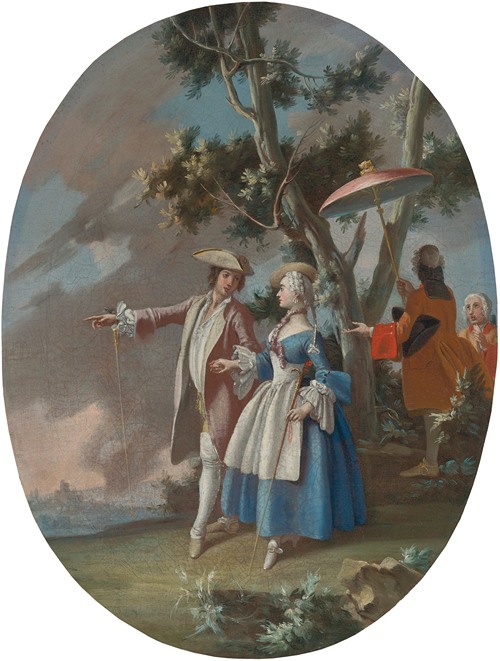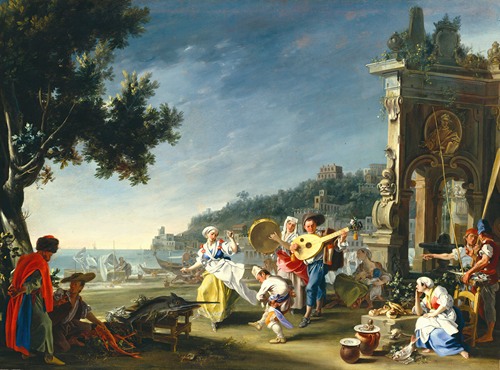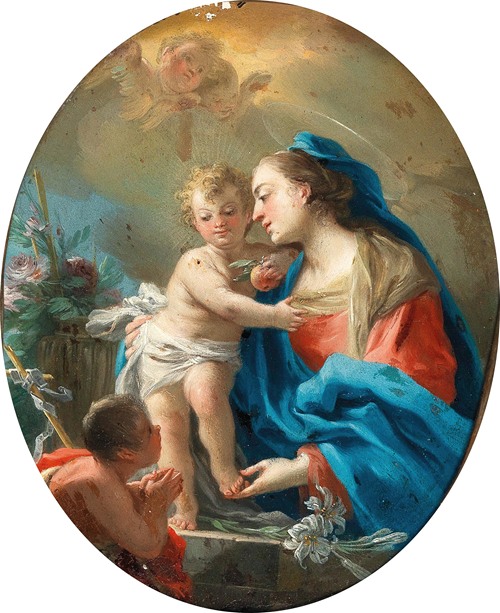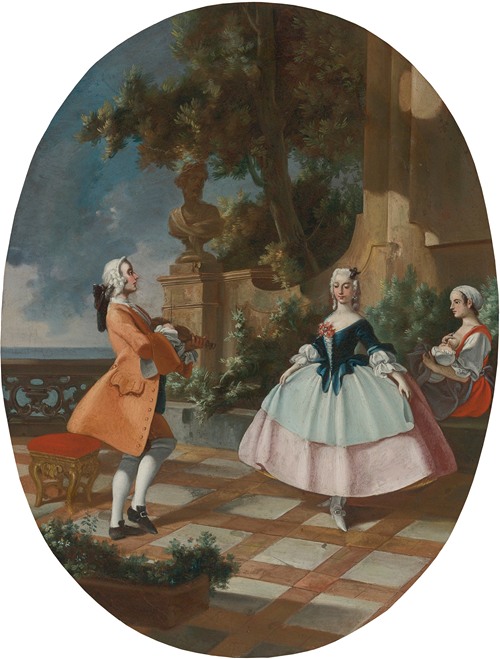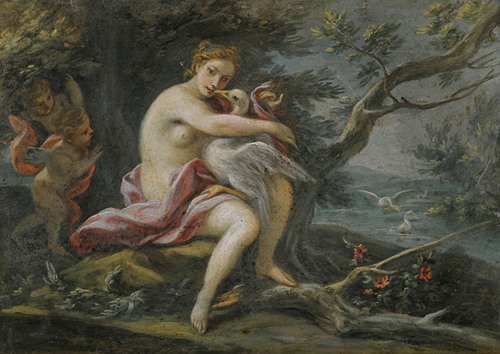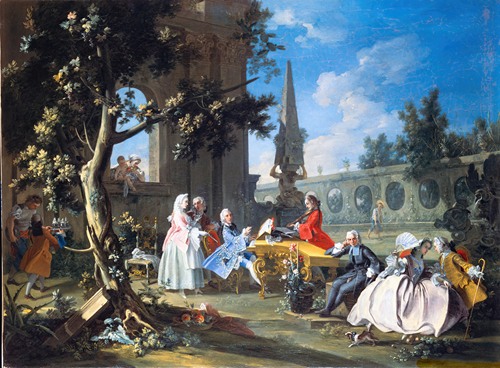
Falciatore trained under Paolo de Matteis and soon afterwards Domenico Antonio Vaccaro. The latter artist's elegant style and colour are evident in many of Falciatore's early works including a number painted on copper, the Judith and Holofernes in Bremen or The Discovery of Moses in Linz. Works dating from the early 1730s including frescoes for the palaces of the Dukes of Monteleone and Brunasso and the vault of S. Giacomo degli Spagnoli, have been lost but in 1738 he is known to have painted panels for Maria Amalia's sedan chair (see below).
In 1741 Falciatore executed a fresco of the Story of Esther and portraits of Carmelite saints for the sacristy of the Carmine Maggiore, Naples which break from his earlier conventional style and show a lightening of his palette. A number of small genre paintings depicting bourgeois daily life in Naples, street scenes, local customs and other narrative events date from the 1740s and are often acerbic in content. They lack Traversi's introspection and are both more Rococo and French in taste. Several mythological paintings including the Juno and Argus in the d'Onofrio Collection, Naples date from this time when Falciatore was at the height of his success.
His later works of the mid 1750s show a move towards a more classical style, which emanating from Rome, had begun to pervade Neapolitan art. Nevertheless, Falciatore still managed to lend a tone of narrative even to his religious works during this period. His final years are only documented by two surviving paintings: the Assault on a Carriage at the Foro Carolino of 1764 and the late Baptism of Christ of 1768
